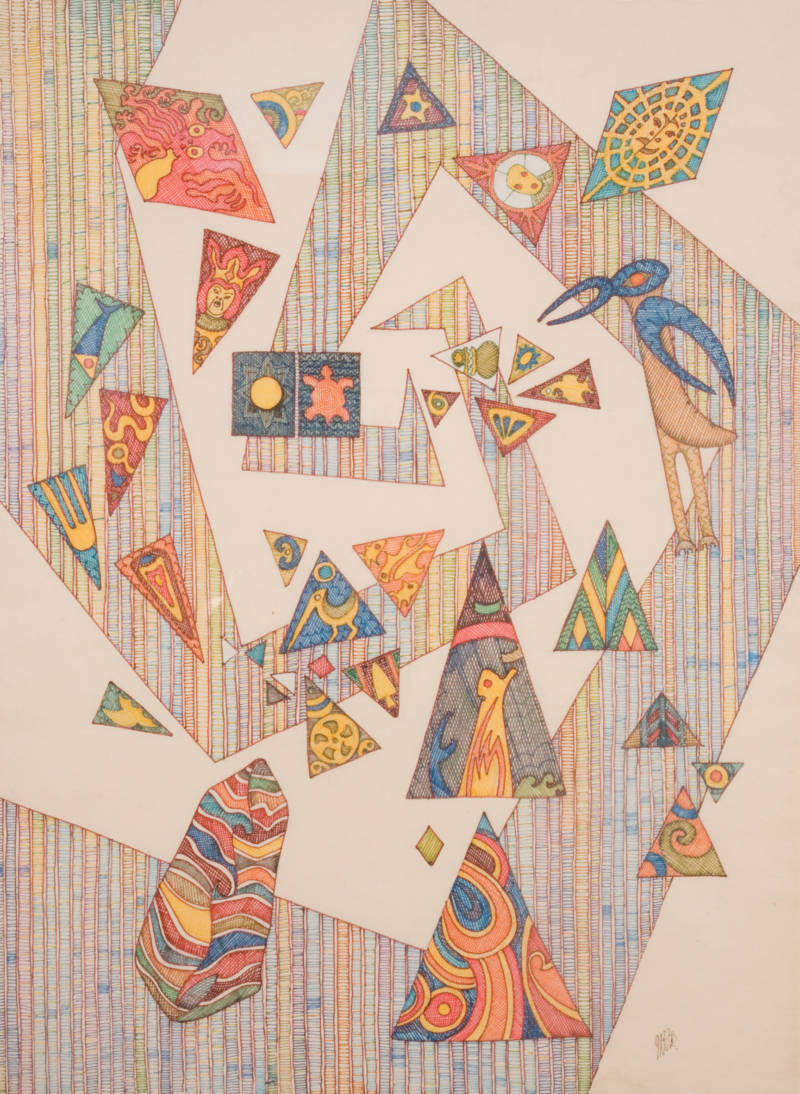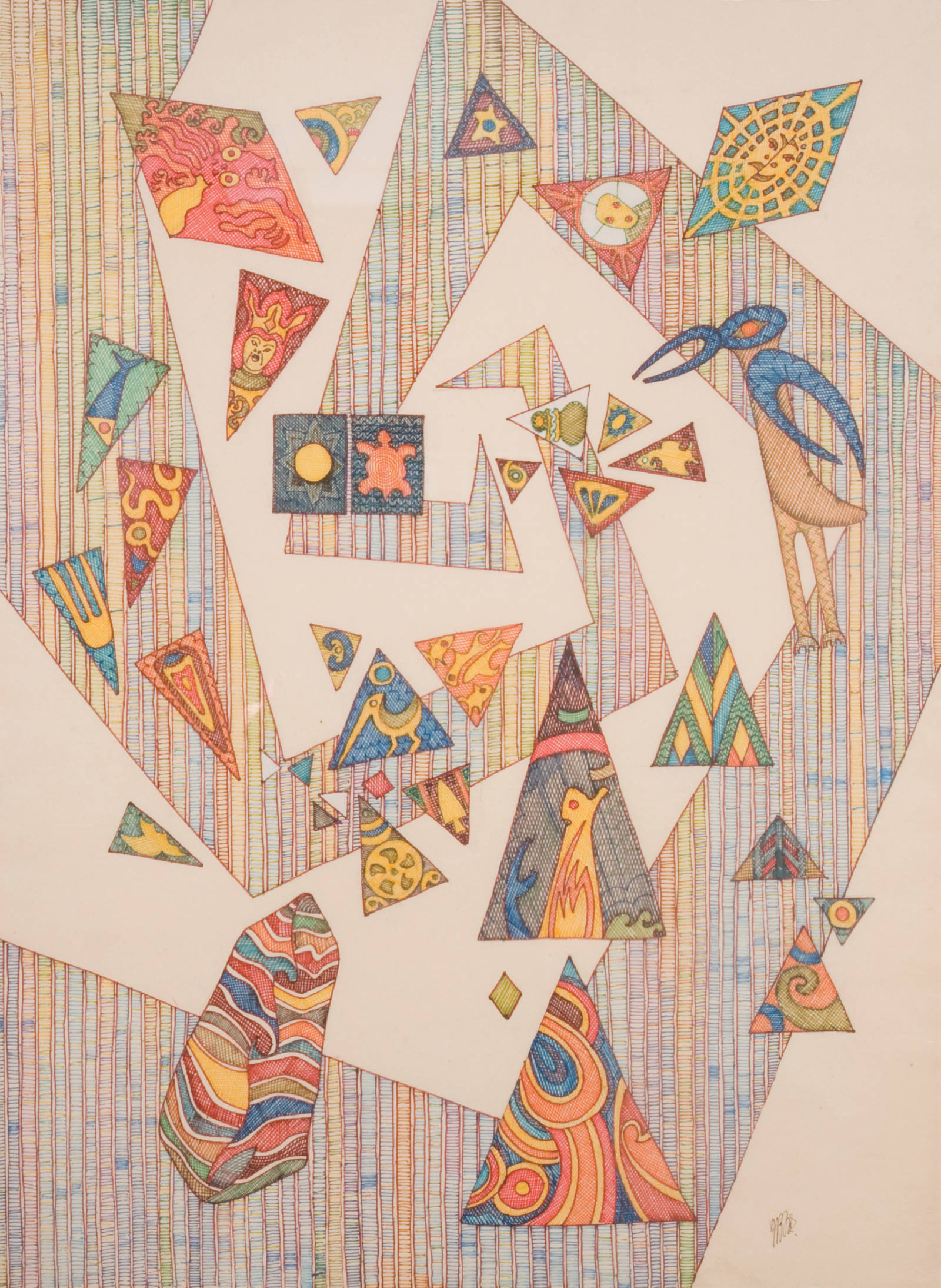FORD, John Bevan;
Combined Energies (Te Aitanga a Kiwa series)
1995
Coloured inks on Japanese paper
1050 x 882mm

The following two texts were written for Te Huringa/Turning Points and reflect the curatorial approach taken for that exhibition.
Peter Shaw
The art of John Bevan Ford was well known outside New Zealand as the result of his work at the Metropolitan Museum, New York, and the British Museum, London, where in 1998 he was artist-in-residence. He also created major sculptures for the cities of Changchun and Beijing in China. For most of his life he dedicated himself to art education, inspired by his mixed Māori and European heritage.
In this work, one can readily see the highly detailed linear style he favoured. While it is something entirely his own, there is no doubt of the influence of the form and structure of hand-woven Māori cloaks. For him, the cloak became an all-encompassing metaphor for landscape, migration and mythology. He readily absorbed motifs and symbols from other cultures, too. His art was concerned with making bridges between past and present, and between cultures and peoples.
Jo Diamond
John Bevan Ford is well known for his use of inter-cultural indigenous symbols and references to raranga (Māori weaving). This painting is replete with both those symbols and also suggestions of weaving in the fibrous nature of the compositionally dominant spiral, its soft vertical lines suggesting open-weave fabric. Māori motifs are only subtly implied amongst the various bird-like figures, aquatic creature shapes and personifications that echo Pacific identities. This painting pays respect to the indigenous cultures of Japan and Australia, including them in a discourse about those who populate the Pacific rim.
The artist deserves the respect many Māori people pay him for his socially-based insights into many non-Western ways of viewing the world. His work encapsulates the ideal embedded in the Māori term ‘ngā hau e whā’. A literal interpretation is ‘four winds’, which refers to situations, including marae hui (meetings), where people from all corners of this country, if not the rest of the world, gather together for a particular kaupapa (reason, agenda or important issue). Their combined efforts toward beneficial change are invited on such occasions.
In this work, Ford champions just such a combined movement to guarantee the respect and preservation of indigenous cultures, many of whom have lost languages and distinctive cosmologies as the result of European expansion into the Pacific. The artist’s combined energies represented here are all nature-based, in stark contrast to the primarily commercial energies that drove colonialist activity.
Exhibition History
Te Huringa/Turning Points: Pākehā Colonisation and Māori Empowerment, Sarjeant Gallery Te Whare o Rehua, Whanganui, 8 April to 16 July 2006 (toured)
Provenance
1995–
Fletcher Trust Collection, purchased August 1995

